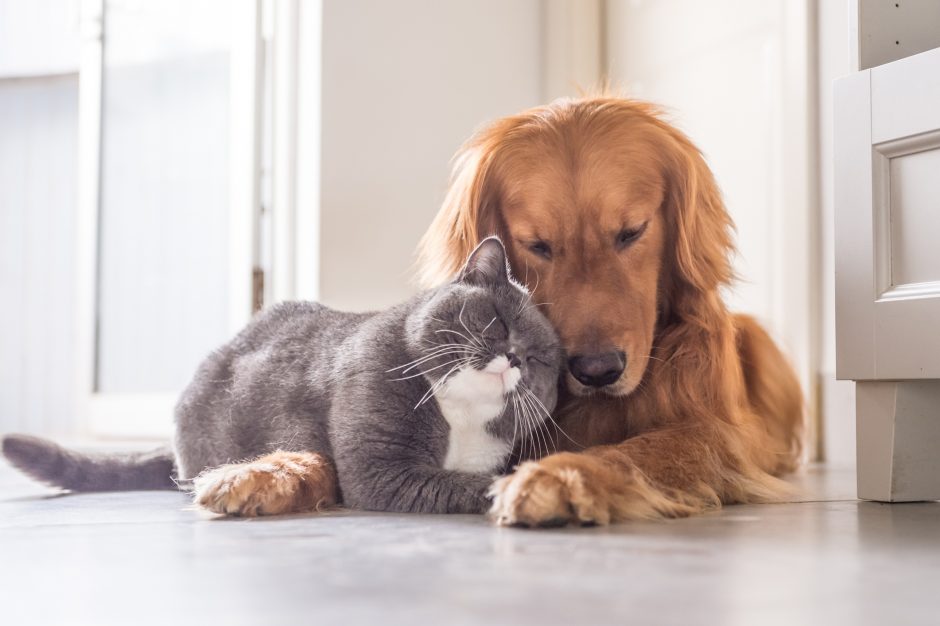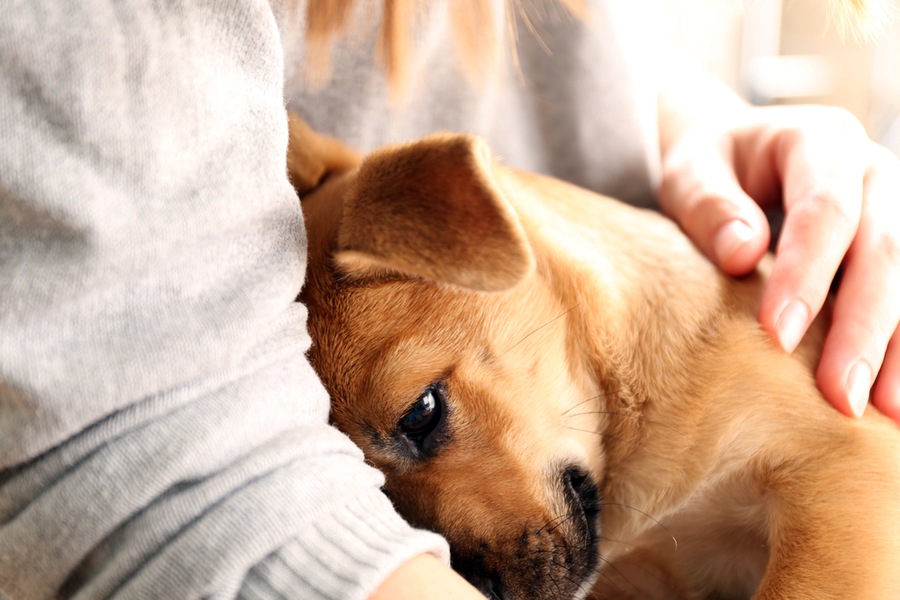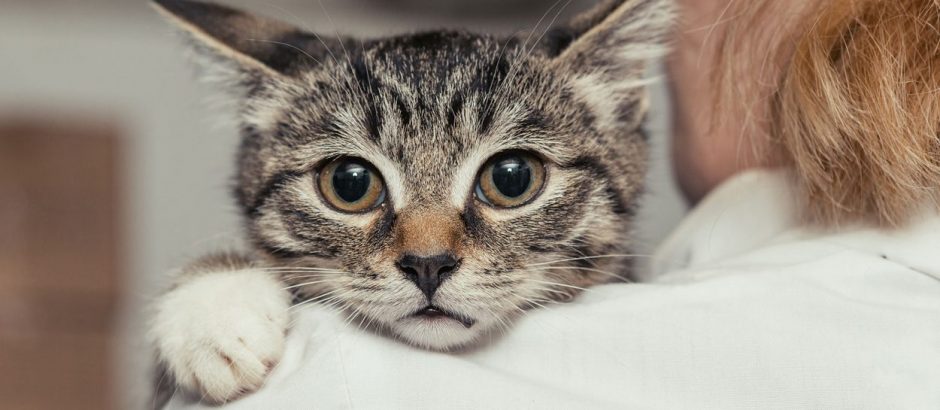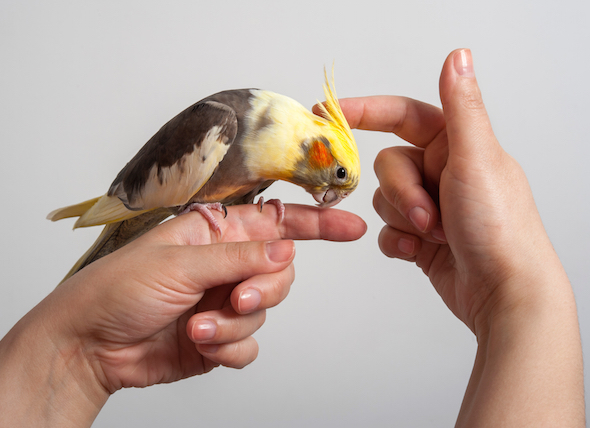Fear is an extremely powerful emotion both in the world of animals and humans. It can motivate you, stimulate your self-defence instinct and save your life. But is there such a thing as too much stress? Yes! And as much as it’s helpful, at the same time, intense or chronic stress can also impair your physical and mental health condition.
People can read self-help books, meditate or go to psychotherapy. While animals have to deal with their emotions on their own and they only can rely on our goodwill and, hopefully, understanding.
Exactly — the understanding. We think that we know our pets better than anyone else in the world. But is that 100% true? Under the guidance of Petplace, we’ll try to find out what the role of stress is and how to recognize if your pet needs help.

Human and Animal Stress
The fear mechanism in animals and humans has the same evolutionary background. All living creatures are afraid of losing life or getting injured. In order to save ourselves, we involuntarily get stressed.
How Exactly Does it Happen?
A stressed organism produces adrenaline and cortisol that accelerate the heart rate and increase blood pressure. This so-called fight-or-flight mode is still occurring both in ours and our pets’ bodies.
Is There Any Difference at All?
Even though the chemistry of fear and the kinds of responses to this emotion are common for the human and animal worlds, there indeed is a small but incredibly significant difference. The difference is how we deal with stress!
Learn the Behavioural Signs of Stress in Animals
How do you know that somebody’s scared and stressed? Such a person is probably sweating excessively, picking at their own skin and lips, trembling… Stress symptoms in pets are visible, as well.

Dog Calming Signals
The most popular example would be the calming signals of dogs. Dogs not only use the signals among each other but also to communicate with humans. The signals are supposed to let us know when a dog feels uncomfortable.
You sure have seen dogs licking their own noses, yawning a lot, wagging the tail or putting it between the legs, smiling, and with their ears flat back to the head. And you’ve probably thought that they either were happy or sleepy.
Wrong! A dog wagging her tail isn’t necessarily happy to see you — she might be stressed, e.g., because of your abrupt moves, and wagging the tail in this case can be a signal for you to calm down and give her more space.

Signs of Stress in Cats
Nervous cat’s behaviours can also be quite unexpected and easily misunderstood. Licking their noses, over-grooming, exaggerated clinginess or avoiding human contact at all, hiding (especially in unusual places), and intense purring are clear messages from your cat that she’s either stressed, distraught or sick.
The Danger of Misunderstanding
It’s natural for us that we’re humanising all other creatures’ behaviours and mimics. However, we should be aware of this tendency because it can cause a lot of misconceptions. Such interspecific misconceptions can be really harmful.
A perfect example of how dangerous human ignorance can be is a viral video with a lemur that’s being tickled under her arms. Huge sad eyes when the hands stopped tickling and arms put up when the tickling started again. Our human mind thinks that the animal raises her arms with joy and to invite the human hands to carry on.
Wrong again! Lemurs are putting their arms up in self-defence. With this gesture, she was asking the human to stop tickling which these animals experience as an actual torture!
Receiving stress signs from your pets and interpreting them in the human language actually is negligence that can lead to a pet’s trust issues, neurosis, development of compulsive behaviours and severe medical conditions.
Helping a Stressed Animal
We could say that the ideal way of fighting stress is simply avoiding stressful situations. Unfortunately, it’s not a very effective solution. Avoiding your pets’ triggers is like giving them painkillers for an open fracture.

The best weapons in the battle against stress are:
Proper Training
This aspect concerns dogs especially. Training puts order in a dog’s mind and helps create a solid bond of mutual trust and understanding between the pet and the owner. You can actually teach your dog patience and give her the sense of safety that will last even under your absence. Dog training is a necessary tool to build the animal’s stress resistance.
Careful Observation
Living with your pets day by day makes you naturally indifferent to many of their quirks or intensification of some of their behaviours. It’s important to stay slightly alarmed and cautious.

Birds, for instance, are grooming themselves just like cats and just like them, they can also show over-grooming which leads to an excessive loss of feathers. You have to be able to tell the difference between losing the feathers because of lack of vitamins and because of over-grooming as a symptom of loneliness or reaction to improper living conditions.
If you can see any, even tiny disturbing behaviours in your pets, don’t delay a consultation with their vet!
Using Sedatives if Necessary
Sometimes animals are experiencing possibly stressful situations so intensively that using sedatives appears to be necessary. Ask the vet how you can support your pet’s wellbeing with medications.
There are also mild, natural tranquilizers (e.g., herbal pills) that you can use during training sessions dedicated to socialising with other animals and reducing anxiety disorders (e.g., separation anxiety).
Keep in mind that you need to keep the vet informed about your pet’s reactions to the prescribed sedatives and about its smallest behavioural changes.
If you can feel that your animal’s mental condition is getting way out of your control, don’t hesitate to get some help from a professional animal behaviourist!
Read More:
Pet-Friendly Landscaping
How to care for Gouldian birds, personality and food care
Moving with pets: tips for finding a per-friendly apartment
Learn how to train a puppy by following just 10 tips

